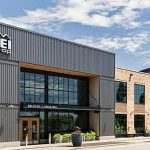Thule Group reported a loss in the fourth quarter amid eroding margins and a sales drop of 21.0 percent on a currency-neutral basis.
Fourth Quarter
- Net sales for the quarter amounted to SEK 1,651m (U.S. $158 million) against SEK 1,846m a year ago, corresponding to a decrease of 10.6 percent. Adjusted for exchange rate fluctuations, sales declined 21.0 percent.
- Operating income amounted to SEK 4m (SEK 190), corresponding to a margin of 0.2 percent (10.3). Adjusted for exchange rate fluctuations, the operating margin decreased 11.5 percentage points.Net income amounted to a loss of SEK 16m (income: 154).
- Cash flow from operating activities totaled SEK 110m (outflow: SEK 344).
- Earnings per share before dilution amounted to SEK -0.15 (SEK 1.47).
- The Board of Directors proposes a dividend of SEK 9.20 per share (SEK 13.0) which, based on the number of shares outstanding on February 10, 2023, corresponds to a dividend of SEK 962m (SEK 1,359).
Full-Year
- Net sales for the full year amounted to SEK 10,138m (SEK 10,386), corresponding to a decrease of 2.4 percent. Adjusted for exchange rate fluctuations, sales declined 9.7 percent.
- Operating income amounted to SEK 1,706m (SEK 2,340), corresponding to a margin of 16.8 percent (22.5). Adjusted for exchange rate fluctuations, the operating margin decreased 5.4 percentage points.
- Net income amounted to SEK 1,275m (SEK 1,790).
- Cash flow from operating activities totaled SEK 616m (SEK 1,128).
- Earnings per share before dilution amounted to SEK 12.19 (SEK 17.12).
The report comes a day after Thule named Mattias Ankarberg as its new president and CEO of the company. Ankarberg, formerly president and CEO of Byggmax Group, has been on the board of Thule since 2018, and will take over as president and CEO of Thule no later than August 9, 2023. Magnus Welander, the current president and CEO, will remain in his role until Ankarberg finishes his current position.
Welander said in his quarterly comments, “A year with two phases. Sales in the fourth quarter declined 21 percent after currency adjustment compared to the previous year. This meant that sales for the second half of the year declined 26 percent, compared with a currency-adjusted growth of 4 percent during the first half of the year. The main reason for the lower sales in the second half of the year was the sharp slowdown in sales of bike-related products to the retail channel, which attempted to lower its inventory following excessively large pre-season orders.
We reached sales of SEK 10,138m for the full year. After currency adjustment, this represents a decline of 9.7 percent compared with the record year of 2021, but a currency-adjusted growth of 40.6 percent compared with 2019, the year before the pandemic.
During the fourth quarter, the EBIT margin was 0.2 percent (10.3). An unfavorable product mix, under-utilized production capacity, continued high prices for raw materials and freight, as well as our unwavering ambitious investments for future growth, mean that the EBIT margin declined year-on-year and totaled 16.8 percent.
Inventory amounted to SEK 3,129m at the end of the quarter, down SEK 11m compared with the end of the third quarter. The inventory consists of components and products that we are convinced we will be able to sell in 2023.
During the quarter, we committed ourselves to the globally established Net Zero by 2050 undertaking as part of our long-term sustainability goals.
Decreased Sales Of Bike-Related Products In Europe and ROW
During the quarter, sales in the region declined year-on-year by 12.7 percent after currency adjustment. This means that full-year sales declined 8.9 percent after currency adjustment.
Bike-related products accounted for 41 percent (52) of sales for the full year. It is worth noting that the pandemic year of 2021 was an exceptionally strong year in the bike industry in general and that we also captured market shares in 2021 as a result of our competitors having more significant issues with meeting the demand increase. Sport&Cargo Carriers, with a large proportion of sales in bike carriers, declined during the year by a total of 16 percent after currency adjustment and Juvenile & Pet Products also declined 17 percent after currency adjustment as a result of a reduced sales of bike trailers and child bike seats.
However, sales were strong during the year within the RV Products category, which increased 15 percent after currency adjustment, and Packs, Bags & Luggage, with growth of 20 percent after currency adjustment.
Region Americas Also Impacted By Bike Sector Slowdown
Year-on-year, sales in the region declined 33.7 percent after currency adjustment during the quarter. This means that full-year sales declined 11.5 percent after the currency adjustment.
Also in this region, we noted a substantial decline in sales of bike-related products that accounted for 29 percent (39) of sales for the year.
During the year, the Packs, Bags & Luggage category grew 21 percent after currency adjustment, driven by successful launches and increased travel.
Short-Term Challenges But Strong Confidence In Strategy And Positive Long-Term Trends
At the start of 2023, we will meet strong comparative figures and a challenging market with uncertainty in both consumer demand in an uncertain world and retailer confidence for the season ahead. Since both our own and retailer inventory levels before the start of the season are higher than previous years, we will ramp up the manufacturing capacity later than usual, which is positive from a cash-flow perspective.
We are convinced that the multi-year positive trend of living active lives close to home will remain strong in the long term. We also have unwavering faith in our growth strategy and our long-term goals. Our investments in existing categories as well as those in the new product areas of car seats and dog transport products continue and in 2022, we invested a total of 6.0 percent (4.6) of sales in product development. The investments made in the past years to enable more flexible and automated production provide us with additional prerequisites to, over time, secure profitable and long-term sustainable growth.
As we now enter a challenging time with a high degree of uncertainty for the quarters ahead, we do this with a clear focus on flexibility and with high energy.
I would like to conclude by thanking all of my colleagues for their efforts during a year that has been characterized by two entirely different phases and significant market challenges.”












